In the Year 2525 – The Best Cars of Science Fiction
The best science fiction tells human stories set against a backdrop of strange worlds or futuristic cities. Because pacing and plot are more important than lengthy, accurate descriptions of the technology at work in those worlds, most sci-fi writers don’t spend a lot of time on the various machines their protagonists use. We might know that our hero traveled in a shiny aluminum air car, but the details generally are left to our imagination.
Fortunately for those of us who want a real peek into the future, film is a visual medium. The best directors know that set and prop design are critical to the tone of a movie and that machines can be as important as the action. They pay a lot of attention to getting just the right look and, even though we may not get to open the hood on that futuristic air car, we definitely get to see it at work, get a feel for its lines and even some idea of how it handles. If they do their job right, we might even believe these vehicle could be real.
The following are, in this author’s opinion, some of sci-fi’s finest.
Korben Dallas’ Taxi from “The Fifth Element.”
In our mind’s eye we usually think of the future as a bright shining place free of dirt and disease. The Fifth Element gives us vision of the future in which the world is as dirty and well worn as an old shoe. The cars in the film reflect this by being futuristic flying vehicles, but with design elements taken straight from the cars of our own yesteryear.
Korben Dallas’ taxi’s huge grill, sweeping fenders and fins hark back to the late 1940s and immediately let us know that this car is old and out of date. Although the technology at work is light years ahead of where we are today, the car is obviously a tired, overworked machine that would look perfectly at home along side any of the tired, overworked machines on the bad streets of New York today. It is at once futuristic and believable, normal yet totally over the top. For the sheer audacity of its design, Korben Dallas’ taxi must be ranked high among the best cars of sci-fi.
The “Spinner” from “Blade Runner.”
Blade Runner is another vision in which the future may not be a better and brighter place. In the book, “Do Androids Dream of Electric Sheep” the world is a fully fleshed out disaster in which humanity struggles relentlessly along while living amid the aftermath of World War Terminus. A lot of that back story is lost in the Ridley Scott movie and the viewer is thrown into a confusing future society complete with flying cars and robotic “replicants” almost indistinguishable from, and in some cases maybe even more human, than the people they are supposed to serve.
In his book, Philip K. Dick takes little notice of the vehicles Rick Decker and the other bounty hunters use, but the movie is a visual feast and no expense was spared. The Police “Spinners” used in the film are one of the iconic cars of sci-fi and they seem quite plausible designs. Their tires show that they would work well on the road yet they fly with equal ease. Their large glass cockpits are similar to the ones found in modern helicopters and look as though they would give their operators a good field of vision. What I like best about them is that they seem like regular workaday vehicles that could be at work on any police force in the world today. It is this touch of reality that makes me rank the “Spinner” among the best cars of sci-fi.
The “S.H.A.D.O.” cars from the TV series “U.F.O.”
Gerry Anderson had a huge effect on television sci-fi. Beginning in the 1950s his supermarionation hits including “Stingray” “Captain Scarlett and the Mysterions” and “The Thunderbirds” gave millions of kids a look at the future. By the 1970s, Gerry Anderson was producing movies and live action TV sci fi like “Space 1999” and “U.F.O” and his shows included full size working props along with the superior model-base special effects for which his shows are best known.
Two working cars, known to fans as the “Straker “ and “Foster” cars, were built out of aluminum on the chassis of the English Ford Zephyr Mk 4 and used in Anderson’s first live action movie “Journey to the Far Side of the Sun” and later in his series “U.F.O.” Angular and futuristic with gull wing doors, these cars are a very 1960’s version of the future and they have not aged particularly well. Still, because they were seen and obsessed over by millions of young sci-fi fans they must be counted among the important cars of sci-fi.
The “Cricket” from “A.I.”
The movie A.I. is not one of my favorites. Sorry, I wanted to like it but it comes off as a weird dystopian utopia and I think it sends mixed messages. Do we love technology or don’t we? What if that technology loves us? It’s gut wrenching in a way that makes me both glad and sad that I sat through it.
One thing this move does very well is give us a real vision of what our future may be. It is a better and brighter place, but it is not outside of the human condition. In the end, it is humanity’s own frailty and our inability to really understand how we should relate to the rapidly emerging computerized intelligence around us that that makes this vision of the future miserable. In short, the message is that people are jerks. Got that? Yeah, totally a chick flick.
The car, ‘The Cricket” seen in the film strikes me as the kind of car we might actually see on the road one of these days. Bright, light, futuristic and with convenient sliding doors rather than impossible to use in a parking garage gull-wings, the car looks like something you average suburban mom would drive. To be honest, I think it looks cool. Hell, paint it red and add a racing stripe and I’d drive it. It is because this car seems so realistic, without resorting to blatant product placement like some other movie cars (looking at you Lexus and Audi!) that I consider this one of the great cars of sci-fi.
Bonus – The “Landmaster” from “Damnation Alley.”
Sometimes the future sucks and when that happens you need something like the Landmaster to take you, your hippy wannabe Peacenik former subordinate and a couple of oddballs you find along the way to a better, happier place on the other side of the continent. When this movie was released in 1977, aka the middle of the cold war, wasn’t so much sci-fi as it was a vision of what might happen next week. Still, it was good fun and the Landmaster is awesome.
In the film, the Landmaster is portrayed as being constructed out of ordinary truck parts in order to facilitate repairs in the post apocalyptic world. It turns out that this is also a pretty accurate description of the real thing, too. The prop, built for the film cost of around $300K, used a Ford 427 CID industrial engine, the rear ends from two large trucks and an Allison truck transmission. The most unique feature of the vehicle, its drive wheels, are all fully functional and work shown as in the movie. The truck is said to have survived a 25 foot jump during testing with no damage. Because we are men, the Landmaster must be included in any list of the top Sci-Fi vehicles.
I know there are other vehicles out there, feel free to add your own. Just for reference, although I did select several model cars for this article, I purposely chose not to use any cartoon vehicles. If you know of other vehicles that you think need to be added, please add them. And now – to the comments!
Thomas Kreutzer currently lives in Buffalo, New York with his wife and three children but has spent most of his adult life overseas. He has lived in Japan for 9 years, Jamaica for 2 and spent almost 5 years as a US Merchant Mariner serving primarily in the Pacific. A long time auto and motorcycle enthusiast he has pursued his hobbies whenever possible. He also enjoys writing and public speaking where, according to his wife, his favorite subject is himself.
More by Thomas Kreutzer
Latest Car Reviews
Read moreLatest Product Reviews
Read moreRecent Comments
- MaintenanceCosts Can I have the hybrid powertrains and packaging of the RAV4 Hybrid or Prime with the interior materials, design, and build quality of the Mazda?
- ToolGuy I have 2 podcasts to listen to before commenting, stop rushing my homework.
- ToolGuy Please allow me to listen to the podcast before commenting. (This is the way my mind works, please forgive me.)
- ToolGuy My ancient sedan (19 years lol) matches the turbo Mazda 0-60 (on paper) while delivering better highway fuel economy, so let's just say I don't see a compelling reason to 'upgrade' and by the way HOW HAVE ICE POWERTRAIN ENGINEERS BEEN SPENDING THEIR TIME never mind I think I know. 😉
- FreedMike This was the Official Affluent-Mom Character Mobile in just about every TV show and movie in the Aughts.




















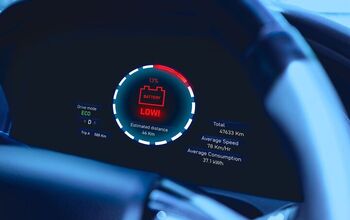

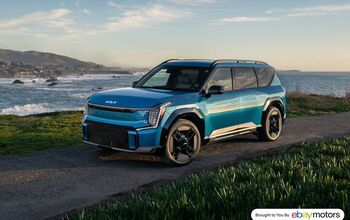
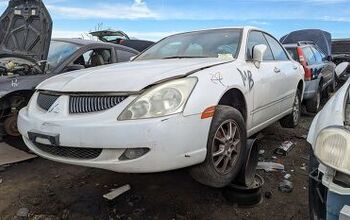

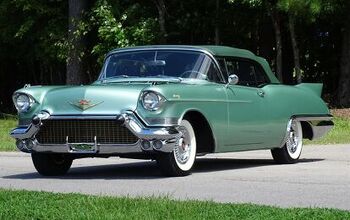

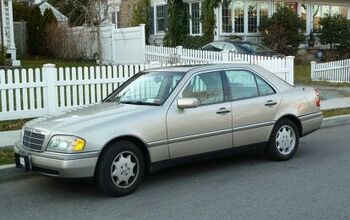

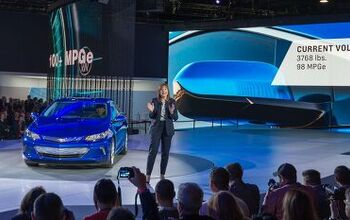
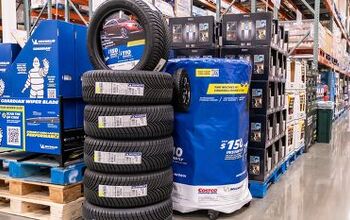




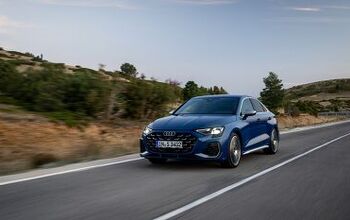
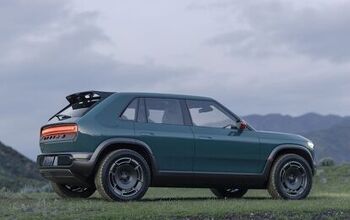
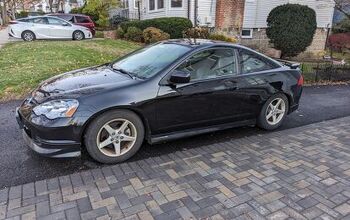
Comments
Join the conversation
Almost forgot - the Jupiter 8 briefly glimpsed in the 1968 Star Trek episode "Bread and Circuses" (the 20th-century-Roman-Empire planet that also used, as an establishing shot, the central domed buildings of MIT): www.imcdb.org/vehicle_581265-Custom-Made-Reactor-Mach-II-1967.html
The Defender from "Viper" Also, KITT -- my car needs Super Pursuit Mode and Tri-Helical Plasteel 1000 MBS.